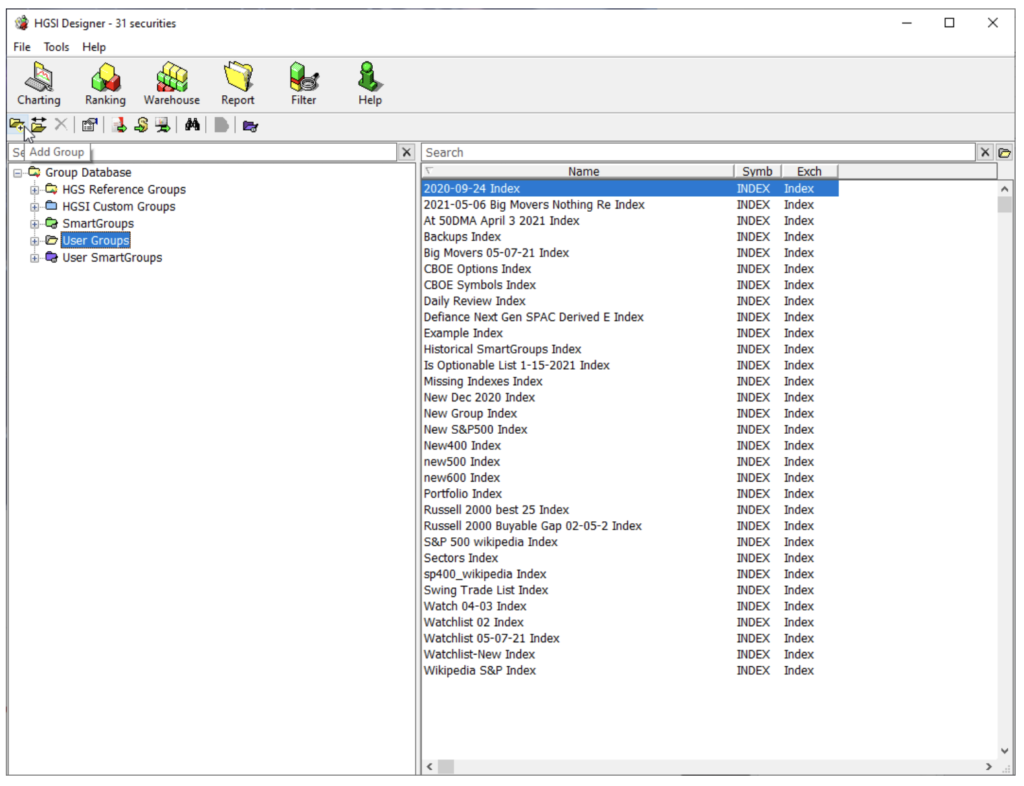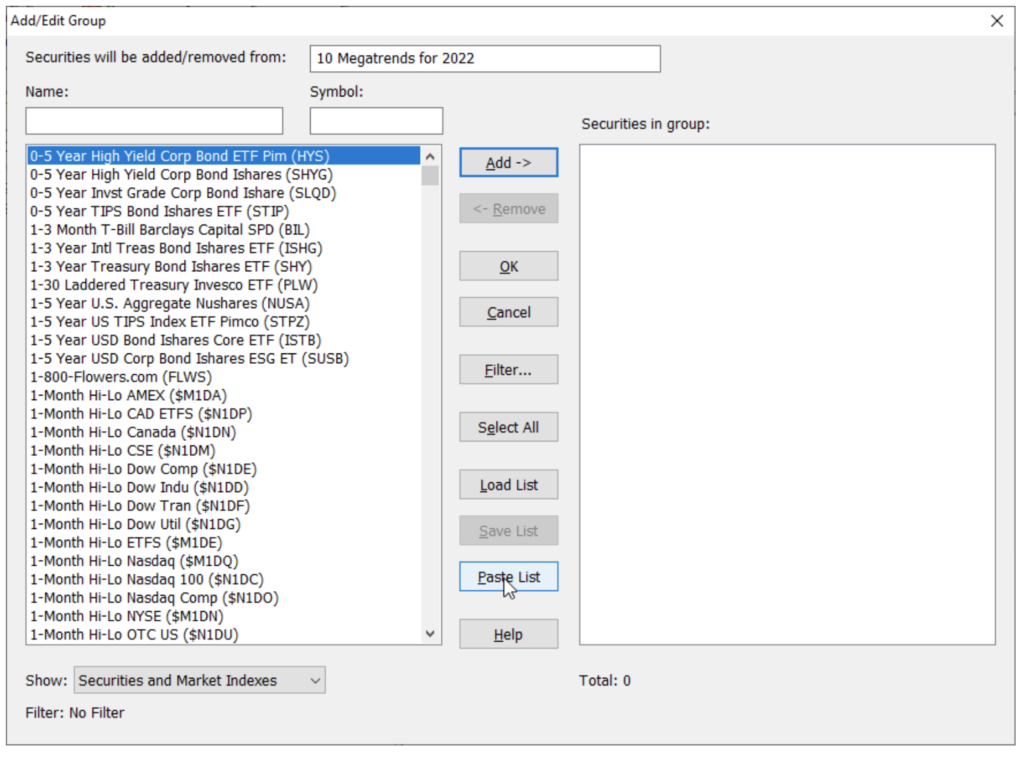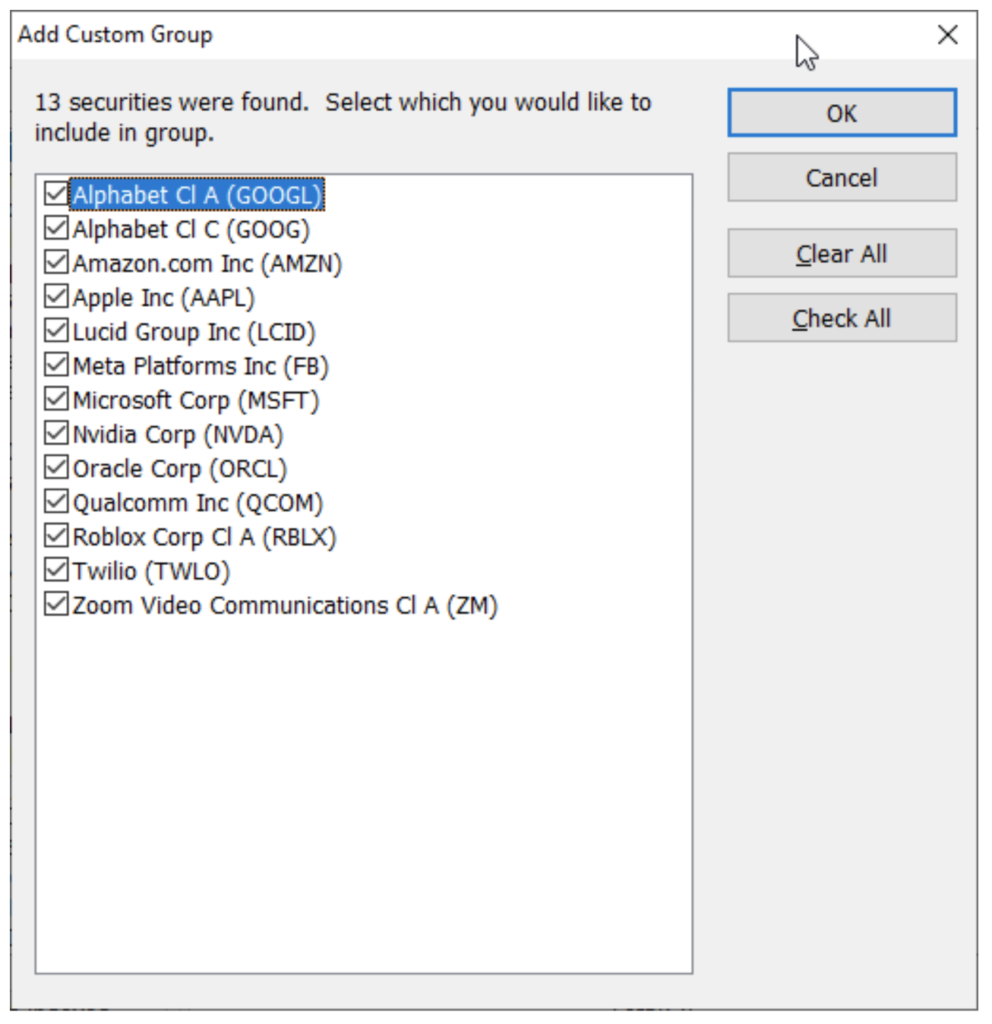HGSI Groups from lists of stocks
It’s pretty common to find web articles or other sources that have lists of stocks, for example: Top 10 holdings, best stocks for the new year, etc. Here’s a quick and easy way you can take those lists of stocks and bring them into an HGSI group. It can be a new HGSI group or you can add them to an existing group.
What is HGSI Groups?
HGSI Groups comes from our most popular feature, Designer Group Database.
All stock charting applications have a database containing price and volume information, but by taking this concept a bit further, HGSI allows you to reach a new level of investment analysis. HGSI makes use of a tree database to contain group information. These reference groups and smart groups are updated and maintained by the software automatically. These groups give the user a quick way to find a starting set of stocks to rank and compare.
In addition, every group has an index computed from the members of that group. These computed indexes offer the ability to do higher-level group analysis and true top down investing.
There are three types of groups in the Group Database:
HGSI Reference Groups
All the securities are organized into the preset groups listed under HGSI Reference Groups. The All Securities reference group is the most popular group referenced by users who build their own filters and User Groups.
SmartGroups(tm)
Unlike the HGSI Reference Groups where each security has a predetermined group, the securities contained in a SmartGroup are assigned dynamically every time the HGSI database is updated. Since the database is updated daily, the securities within a SmartGroup can change from day to day. This occurs because SmartGroups are associated with filters and combination ranking criteria developed by HGSI using the same tools as any user.
User Groups
A user can create as many user-defined groups as needed, organizing them into folders and sub-folders. There are many different ways to create User Groups, e.g. by dragging and dropping groups from the Reference Groups and SmartGroups, or by using a filter in the Designer, Warehouse or Ranking Windows. User Groups can also be created by importing a list of symbols generated outside of HGSI.
Creating the Group from List
First find the list of stocks in your web browser or other document viewer and select them and copy them to the clipboard. Usually you can do this with the keyboard accelerator ctrl-C or you can find a copy option when you right click. In general you want to pick just the stock symbols in question, but HGSI can handle filtering lots of extra text (as long as the extra text isn’t also a stock symbol in the database).
Here’s an example where at the top of the article is a list of all the stock symbols the article is covering:

Because of all the extra’s I ended up having to select a larger range of text

Then hit ctrl-C to copy that to the clipboard.
Into HGSI Software
Now back in HGSI go to the Designer and select User Groups and click on the Add Group button.

In the Add Group dialog, give the new group a name and choose Paste List.

Now you have to decide if you want everything HGSI found in the text you copied to the clipboard as stocks in your group.

Some stock symbols are very short single letters and can often show up when using the paste list feature, so you should double-check what was found and make sure everything is right. One thing you will notice is that the SPX stock symbol wasn’t found, that’s because market indexes in HGSI have different symbols than what you are likely to find on websites. When you press OK, all of those stocks will be added to the new group (or appended to a group you are editing). To complete making the group, press OK on the Add/Edit Group dialog.
You can do this paste list as many times as you’d like to build up a group from various sources.
More about HGSI Features
This is just one of the useful investing features that HGSI has available. To see an overview of all of HGSI’s features, how they can help you grow your investment and wealth. Sign Up for our 30 day Free Trial Now to start Growing »

Comments are closed.